In Search of the Lost Chord: Peace, Love and the Hippie Idea in 1967
The counterculture movement championed the fight for civil rights, the protests against the Vietnam War and spiritual values above and beyond fame and fortune.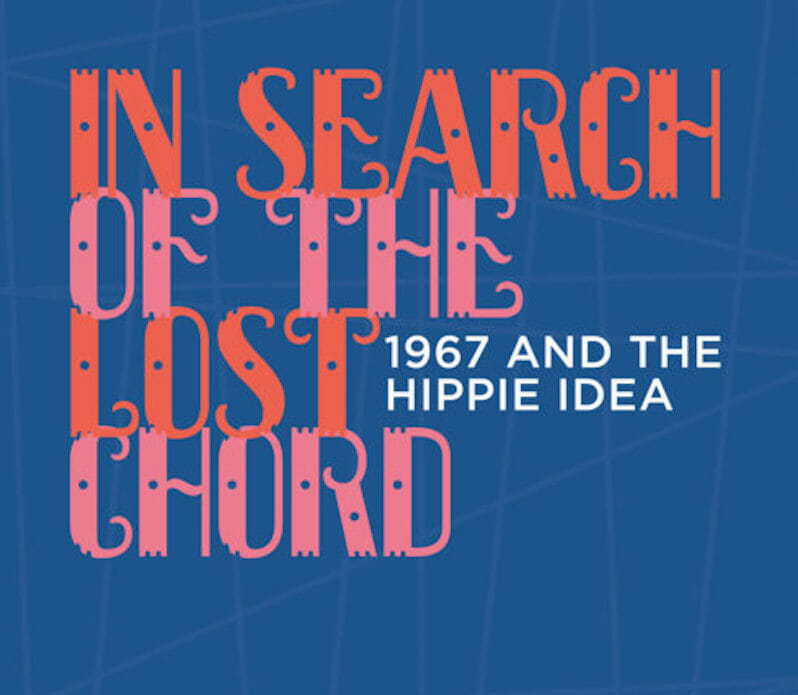 The cover of "In Search of the Lost Chord." (Akashic Books)
The cover of "In Search of the Lost Chord." (Akashic Books)
The following excerpt is from Danny Goldberg‘s new book, “In Search of the Lost Chord.” It is published on Truthdig with permission from Akashic Books.
“There is a mysterious cycle in human events,” my parents’ idol Franklin Delano Roosevelt proclaimed in the speech in which he also said that their generation had a “rendezvous with destiny.” The mystery that informed my own adult life revolves around a different rendezvous several decades after Roosevelt’s speech. I was sixteen and wide-eyed and there really was a moment when “peace and love” was not meant or taken ironically. In terms of mass popular American culture, that moment peaked in 1967. Where did it come from? Where did it go?
LISTEN: Music Industry Veteran Danny Goldberg on Channeling the Idealism of the Summer of Love
The hippie movement that swept through the Western world was like a galloping horse in the wild. A few dozen people were able to ride it for a while, some even steering it for a brief period, but no one—no philosopher, no spiritual figure, no dope dealer, no songwriter or artist, and certainly no political leader—ever controlled it. It was the original “open source.” From the influence of psychedelics to a widespread rebellious ethos that resisted any kind of authority within various countercultures, the era can only be understood through a collection of disparate, sometimes contradictory narratives.
David Crosby, Paul Kantner, and Robin Williams are among those who have been credited with the saying, “If you remember the sixties, then you weren’t really there.” The quote is usually deployed as a laugh line, as if anyone truly immersed in hippie culture would have been so stoned that they would have forgotten it all.
On the other hand, perhaps some chose not to talk about certain nuances that seemed too fragile to survive in the public air. In The Varieties of Religious Experience, William James suggests that one quality of a mystical experience is the impossibility of describing it. Yet hints can be found.
“The sixties” is a hybrid of the civil rights and antiwar movements combined with a mystical spirit that worked through some extremely fallible humans. Allen Cohen, a founder and editor of the San Francisco countercultural newspaper the Oracle, referred to hippies as “a prophetic community.” But they were not, for the most part, formally religious or even well behaved. There is no doctrine, just thousands of stories, and a lingering vibe.
I graduated from Fieldston High School in New York City in 1967, and the sixties had a lasting influence on me and many of my closest friends from that time. I attended the University of California, Berkeley, briefly (very briefly), and by the end of 1968 had begun my career in the rock-and-roll business, an industry that itself owes much of its success to sixties culture.
I refer to a “lost chord” in the title of this book because whatever “it” was in 1967 was the result of dozens of separate, sometimes contradictory “notes” from an assortment of political, spiritual, chemical, demographic, historical, and media influences that collectively created a unique energy. It should go without saying that no two people perceived the late sixties in the same way, and that the space limitations of a single volume and my own myopia require me to leave out far more than I include.
This is a subjective and highly selective history, an attempt at trying to remember the culture that mesmerized me, to visit the places and conversations I was not cool enough to have been a part of.
My perspective is that of a straight white male New Yorker from a mostly secular Jewish family. I did very little research on countercultural developments outside of London, California, and New York, the places that fired my imagination at the time. I had little awareness of many vibrant cultural spheres including art, literature, and fashion, limitations that are obvious in my narrative.
Political struggles both on the street and in the corridors of government were central to the era. However, I disagree with numerous left-wing historians who view the “hippie” phenomenon as a secondary sideshow revolving around escapism that did more harm than good to what they regard as the “serious” aspects of the sixties. This conventional lefty wisdom ignores the mystical aspects of the counterculture that were intertwined with protest and reform.
Yet, even though many of us were a lot more into LSD than SDS, the overwhelming shadow of the military draft affected tens of millions of young men and their families. There was a widespread loss of faith in authorities who advocated obedience to a Cold War foreign policy. The cauldron of social readjustments for both blacks and whites in the wake of a long overdue dismantling of racist Jim Crow laws was intense. (Needless to say, many Americans of other ethnicities, including Latinos, Native Americans, and Asians, had their own challenges and journeys, but in the cultures of 1967 that reached my teenage brain it was the black/white relationship that predominated.)
The lost chord I am seeking had many other notes in it as well. After all, men in the United Kingdom were not called upon to fight in Vietnam; notwithstanding its colonial karma, the UK did not have racial tensions comparable to America’s. Yet there is no version of “the sixties” in which British rockers like the Beatles, Cream, and Donovan, radical therapists like R.D. Laing, writers like Bertrand Russell, and fashion icons like Mary Quant, were not integral figures. Millions of European, Australian, Canadian, and American teenagers felt they had more in common with each other than they did with anyone else.
In talking to dozens of people of my generation who were affected by the hippie idea, there is a near universal recollection of a period of communal sweetness. There was an instant sense of tribal intimacy one could have even with a stranger. The word that many used was “agape,” the Greek term that distinguishes universal love from interpersonal love.
One personal story I like to tell about the sixties took place in the San Francisco airport in 1967 when I was trying to get on a plane back to New York to see my family for Thanksgiving. I was barefoot and was told by an unpleasant airline employee that I could not board without shoes. With little time to spare, I scanned the airport and made a beeline toward a young guy with long hair who looked cool to me. I explained my predicament and asked if he would lend me his shoes for the flight, and gratefully accepted them when he agreed without a moment’s hesitation. I am still not sure what is more remarkable, the fact that he gave his shoes to a stranger or that I had the certainty that he would do so.
I am equally certain that this would not have been possible a year later.
The word “hippie” morphed from a brief source of tribal pride to a cartoon almost immediately. Ronald Reagan, who began his first term as governor of California in 1967, said, “A hippie is someone who looks like Tarzan, walks like Jane, and smells like Cheetah.”
Most of the mainstream liberal establishment of the time was almost as dismissive. In August of 1967, Harry Reasoner delivered a report for the CBS Evening News in which he referred to the Haight-Ashbury section of San Francisco as “ground zero of the hippie movement.”
After an interview with members of the Grateful Dead, Reasoner questioned the premise that hippies were doing anything to make the world a better place: “They, at their best, are trying for a kind of group sainthood, and saints running in groups are likely to be ludicrous. They depend on hallucination for their philosophy. This is not a new idea, and it has never worked. And finally, they offer a spurious attraction of the young, a corruption of the idea of innocence. Nothing in the world is as appealing as real innocence, but it is by definition a quality of childhood. People who can grow beards and make love are supposed to move from innocence to wisdom.”
A similar disdain was prevalent in most liberal circles in Washington. After Timothy Leary and Allen Ginsberg testified in front of the US Senate Subcommittee on Juvenile Delinquency, Thomas Dodd, the Democratic committee chair, denounced them as “pseudo-intellectuals who advocate the use of drugs in search for some imaginary freedoms of the mind and in search of higher psychic experiences.”
Fifty years later, reading those sanctimonious putdowns reminds me of the revulsion I had for such “respectable” men. For many of us, the idea of breaking the addiction to climbing the ladder of officially sanctioned “success” was not an “imaginary freedom” but a reason to live. None of us felt, individually, that we were “saints,” but we did believe that there was a growing subculture that could come up with a better value system than the one we were born into. We didn’t see “innocence” and “wisdom” as mutually exclusive, and we bitterly resented it when unhappy authority figures insisted on this false choice.
There was indeed a danger from indiscriminately using hallucinogens, but we also knew that for most people they were nowhere near as dangerous as the corrosive effects of legal drugs like beer and gin and tonics, or tranquilizers like Librium, which were inexplicably accepted by many of the same people who were so down on pot and acid—the criminalization of which further eroded the credibility of their authority for many of us.
As for Senator Dodd’s condescending use of the word “pseudo-intellectuals,” he was among the majority of Democrats who sided with the supposedly wise Ivy League “intellectuals” in the Kennedy and Johnson administrations who were responsible for the escalation of the Vietnam War.
I first used the phrase “the hippie idea” after Gil Scott-Heron died. Gil was one of the great R&B/jazz poets of the seventies and eighties and considered one of the progenitors of hip-hop. But I first met him in 1964 when we were in the same tenth-grade English class. Gil’s mother was strict enough that he wasn’t taking acid with us in high school. A lot of his identity in those day revolved around being a jock—the center on the basketball team and a wide receiver on the football team.
But Gil also befriended “heads” like me and breathed the air of the hippie idea along with the rest of us. (A “head” was someone who smoked dope. “Straight” in the pre–gay liberation era meant someone who didn’t get high.) Gil joined several pickup rock bands and sang contemporary hits like “Wooly Bully” and “Like a Rolling Stone.” He was always up for a conversation about the meaning of life and already had the seeds of a leftist radical critique of racism and the ugly side of capitalism that would inform his extraordinary body of work. Shortly after we graduated, Gil released the classic song “The Revolution Will Not Be Televised.” For decades the song was used in film montages of protests and riots. Yet a year before he died, Gil did an interview where he sardonically explained that the lyrics were often misunderstood: “It meant that the revolution is inside you.”
(As this book was being written, the song was repurposed over the opening credits in the sixth season of the Showtime series Homeland.)
What I mean by “the hippie idea” is the internal essence of the tribal feeling separate and apart from the external symbols which soon became overused, distorted, co-opted, and thus, understandably, satirized. The conceit is that if you subtract long hair, hip language, tie-dyed clothing, beads, buttons, music, demonstrations, and even drugs, there was still a distinctive notion of what it meant to be a happy and good person, and a sense of connection to others was the invisible force behind those things. It included the moral imperative to fight for civil rights and against the war, and the spiritual notion that there were deeper values than fame and fortune. Peace and love.
The derisive term for what one didn’t like was “plastic.” At the same time, the hippie idea was also a joyous contrast to pessimistic postwar existentialists and Marxist intellectuals. They wore black. Hippies liked colors.
To some, the counterculture offered an alternative to organized religions that too often seemed preoccupied with rules and conformity, especially on sexual matters. (One reason Eastern religious traditions resonated with many hippies was because they carried no American family baggage.) But for millions like me, it was a deeply felt rejection of the secular religion of fifties and early sixties America: Mad Men materialism, along with Ayn Rand’s social Darwinism and, to some extent, the Freudian doctrine that reinforced it. Much of the “established” world seemed removed from the deepest aspects of human consciousness.
Martin Luther King Jr.’s devotion to Christianity, Muhammad’s Ali commitment to Islam, Timothy Leary’s reverence for The Tibetan Book of the Dead, the connection to Buddhism and Hinduism that inspired Allen Ginsberg and many of the other beats, the fascination of the Beatles with meditation and the Hare Krishna movement, the metaphysical metaphors in many Bob Dylan songs, the guitar solos of Jimi Hendrix, the ripple effect of John Coltrane, and millions of individual psychedelic experiences framed the counterculture of the sixties with a level of mysticism far more intense and meaningful than had been prevalent in the previous postwar era. (Atheists and agnostics fit right into the hippie idea as long as they were cool. As Grateful Dead manager Rock Scully said, the Dead had one cardinal rule: “Do not impose your trip on anyone else.”)
American bohemianism went back at least as far as Emerson and the transcendentalists and reemerged in the fifties in beatnik literature, a few anarchic comedians, and the folk and jazz scenes. But these were all marginalized subcultures, dwarfed in most of America by network TV, pop radio, sports, advertising, money, and mainstream religion.
The distinguishing characteristic of the sixties that emerged after the assassination of President Kennedy was that ideas which had previously been quarantined to a few avant-garde enclaves and ghettos now collided with a giant and prosperous “baby boomer” generation. Allen Ginsberg said that when he heard Bob Dylan’s song “A Hard Rain’s A-Gonna Fall,” he wept, because the bohemian torch of illumination and self-empowerment had been passed on to a new generation.
In 1967, previously esoteric ideas burst briefly into the center of mass culture, influencing the thoughts of millions more people than any American counterculture before or since. Changes in the technology of stereo recordings (and a newly portable ability to hear them), FM radio, and the mimeograph machine fostered “underground” media at an unprecedented level. The sheer magnitude of the baby boomer generation, coupled with advertisers’ hunger for the young demographic, created a climate of mainstream media in which the counterculture made good copy and got high ratings.
1967 was the year of Be-Ins and the Summer of Love, when tens of thousands of teenagers flocked to the small hippie neighborhood of Haight-Ashbury in San Francisco. LSD had been made illegal in California in October 1966, with the rest of the country soon to follow. The antidrug laws, like other forms of prohibition, immediately increased the demand and use of acid, dwarfing the previous interest in and availability of it.
1967 was the year of the Monterey International Pop Festival, which introduced Jimi Hendrix, Otis Redding, Ravi Shankar, and Janis Joplin to a big American rock audience. Hendrix, Joplin (as part of Big Brother and the Holding Company), Pink Floyd, the Velvet Underground, Country Joe and the Fish, the Doors, the Grateful Dead, and Sly & the Family Stone all released their debut albums that year. Among the year’s classic singles were Van Morrison’s “Brown Eyed Girl,” the Turtles’ “Happy Together,” Procol Harum’s “A Whiter Shade of Pale,” Scott McKenzie’s “San Francisco (Be Sure to Wear Some Flowers in Your Hair),” and the Youngbloods’ hit version of “Get Together” with the chorus, “Come on people now, smile on your brother, everybody get together, try to love one another right now.”
It was also the year in which the Beatles released the singles “All You Need Is Love” (introduced via the world’s first global satellite TV transmission) and “Strawberry Fields Forever,” in addition to the album Sgt. Pepper’s Lonely Hearts Club Band. Rolling Stone began publishing in 1967 and “underground rock radio” started broadcasting.
Rhythm and blues (increasingly called “soul music”) was growing on a parallel track through the minds of geniuses like Smokey Robinson, Marvin Gaye, and Aretha Franklin, while at the same time there was a cluster of jazz musicians who dove into the hippie ocean and greatly affected it, including Ornette Coleman, Sun Ra, and Pharoah Sanders.
It was the year that Richard Alpert, who had helped popularize LSD, first went to India, met his guru, and was renamed Ram Dass. It was also the year that the Beatles met the Maharishi, putting the word “meditation” on the front pages of newspapers around the world.
Many pivotal political moments took place in 1967. In the spring, Muhammad Ali refused induction into the army, and Martin Luther King Jr. parted company with mainstream civil rights leaders and publicly denounced the Vietnam War.
In October there was an antiwar march in Washington in which some hippies fancifully insisted they would levitate the Pentagon. That same month, Huey P. Newton got arrested for murder in Oakland, elevating the Black Panther leader to international celebrity status. Stokely Carmichael and Charles V. Hamilton published Black Power. The summer produced the worst race riots in American cities since the Civil War. (The word “riot” itself was, and remains, a source of controversy. Many activists prefer “revolt” or “rebellion.”)
1967 was to be the last full year of power for Lyndon B. Johnson. Allard K. Lowenstein searched for an antiwar Democrat to run against Johnson, and Senator Eugene McCarthy stepped into that role. Che Guevara was killed in Bolivia and overnight became a left-wing icon. Israel won the Six-Day War.
Yet, for all that happened in this pivotal year, my focus is on the feeling, not on the calendar, and there are moments integral to the story that occurred both before and after 1967. Nevertheless, 1968, taken as a whole, was much darker—Martin Luther King Jr. and Robert Kennedy (who joined the presidential race early in the year) were both assassinated, and that year’s primary political legacy was the violent police reaction to protests outside of the Democratic National Convention, and the subsequent election of Richard Nixon.
Forces in the government and corporate America conspired to crush the cultural rebellions, but they were aided by infighting on the political left, a syndrome which, legend has it, led Che Guevara to quip that if you asked American leftists to form a firing squad, they’d get into a circle.
Hubris and/or paranoia distorted the behavior of would-be leaders, while in many corners of the subculture there developed smug, hip parochialism that grew rancid over time. Too often, “heads” looked down on “straights,” which caused more polarization than brotherhood.
By 1968, heroin and speed were ubiquitous in hippie culture. An assortment of lowlife parasites rushed in to exploit the explosive hippie scene and virtually erased the fragile, intense meaning the word “hippie” had embodied just a year earlier. Undercover FBI agents could grow their hair long and wear brightly colored clothes.
The market for products that hippies liked created a class of hip capitalists who had varying degrees of commitment to ethical and spiritual ideals. The shallower aspects of Hollywood started to take their toll. Words like “cool” and “groovy” and sitar riffs could all be dumbed down to support sitcom gags and could be appropriated by superficial bullshit artists.
As the decades passed, the music of the period would prove to be the most resilient trigger of authentic memories, but even some of the songs of the era were gradually drained of meaning by repetitive use in TV shows, movies, and commercials, all trying to leverage nostalgia. Nostalgia for what?
The efforts of millions of peace activists were sometimes overshadowed by the destructive, violent acts of a few dozen delusional radicals. An earnest spiritual movement became obscured to most observers by stoned, pontificating buffoons. No wonder the punk movement that began in the midseventies detested the cartoon distortion of hippies.
Even so, every other belief system has had its pretenders. If one extends the religious metaphor to the hippie idea, it’s not really surprising that its existence didn’t eliminate most of the darkness of the world. Neither did Christianity nor the Enlightenment. But the counterculture did broaden the idea of what it is to be a human being in the Western world.
There is a direct line from many of the leaders of 1967 to contemporary figures such as Steve Jobs, Mark Zuckerberg, Bernie Sanders, Judd Apatow, and Oprah Winfrey, all of whom acknowledge important influences from the figures I am writing about. The environmental movement, which is a direct offshoot of hippie ideas, continues to be a major social force, and “mindfulness” and yoga are even more prevalent in the United States of 2017 than veggie burgers.
Researching 1967 has been a roller coaster ride for me. Sometimes it rekindles the “lost chord” and inspires me. At other moments I yearn to go back in time and warn my heroes that they are about to walk down a path they will regret.
As I explored the forgotten intricacies of 1967, the hippie idea that entranced me as a teenager still seems like an alchemy that produced something unique and special out of the energies and aspirations of dozens of disparate, intense, and cantankerous people, many of them deeply damaged, all of them in one way or another very far out.
That line—if you remember the sixties, you weren’t really there—does have some truth to it. In addition to hallucinogens, the drug of fame often led to fanciful mythmaking. Some stories have been repeated so many times that they have taken on a life of their own. Even close friends have different versions of well-known events. The underground press, whose writers were often the only public witnesses to countercultural activities, had little or no fact-checking capabilities. I have done my best to get it right, but apologize in advance for any faulty assumptions.
Examined up close, there were dozens of separate subcultures, each of which felt it owned the late sixties. San Francisco and Los Angeles rock-and-roll people were deeply suspicious of each other. The Beatles lived in their own world. New York hip life was more intellectual. Black nationalism, the nonviolent civil rights movement led by Dr. King, Muhammad Ali, and the Nation of Islam had fierce disagreements with each other, and they all had different views of the antiwar movement. Student radicals, the old left, liberal antiwar Democrats like Bobby Kennedy and Gene McCarthy, and anarchists often detested each other. Beatniks, psychedelic evangelists, and mystics were often on separate planets.
Yet to many teenagers at the time, this collection of energies somehow harmonized and created a single feeling, the lost chord that lasted briefly, but penetrated deeply into the minds and hearts of those who could hear it. I admired something about all of them. I never felt aligned with just one faction but with the ephemeral collective vibe that permeated the culture. Time was so compressed that many of the signature events of 1967 happened within hours or days of each other. Often they were intertwined. My fascination is with the whole, not merely its parts. However, if I could time travel back to 1967, there is no question that I would begin in the Haight-Ashbury section of San Francisco.
Danny Goldberg is the author of “How the Left Lost Teen Spirit” and “Bumping Into Geniuses: My Life Inside the Rock and Roll Business.” Since 2007 he has been president of Gold Village Entertainment, whose clients include Steve Earle and Against Me. Previously, Goldberg was president of Gold Mountain Entertainment (Nirvana, Bonnie Raitt, the Allman Brothers), CEO of Air America Radio, chairman of Warner Bros. Records, president of Atlantic Records, and vice president of Led Zeppelin’s Swan Song Records. “In Search of the Lost Chord” is his latest work.
Your support matters…Independent journalism is under threat and overshadowed by heavily funded mainstream media.
You can help level the playing field. Become a member.
Your tax-deductible contribution keeps us digging beneath the headlines to give you thought-provoking, investigative reporting and analysis that unearths what's really happening- without compromise.
Give today to support our courageous, independent journalists.
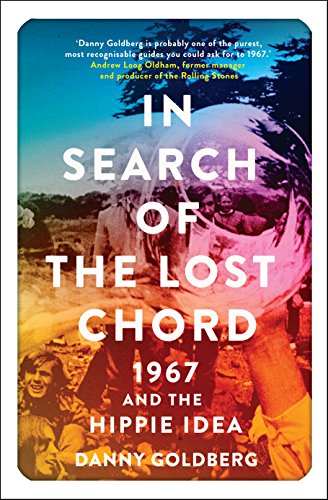
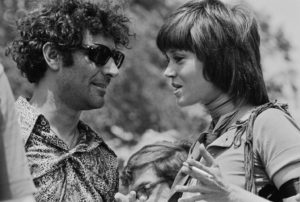
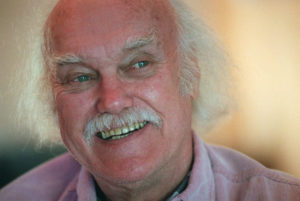
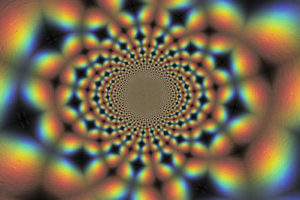

You need to be a supporter to comment.
There are currently no responses to this article.
Be the first to respond.